Collaboration by nature: Getting children outdoors gets top billing when organizations work together
With its super-sized list of supporters and collaborators, Texas Children in Nature (TCiN) is seemingly a model for winning friends and influencing people on behalf of getting kids engaged in the outdoors.
TCiN has more partner organizations (roughly 600) than Texas has counties (254, the most of any state) and the list of partners is as varied and unique as a patch of Texas native prairie
Starting with its founding partner, Texas Parks and Wildlife in 2010, TCiN has grown to be a large umbrella of cities, schools, universities, state and local healthcare organizations and local conservation organizations.
TCiN is organized into eight regional collaboratives so that partnering organizations can find projects and programming that fit with local needs and ambitions, says TCiN Executive Director Sarah Coles.
But the group’s deep bench of varied collaborators brings more attention and resources to the table to help address the growing need to get children outdoors. From participating cities to health care professionals and educators, the vertical growth of TCiN’s partner organizations has been critical to its success, according to Coles.
“Nature-deficit disorder is too big for any one organization to tackle alone,” Coles says. “It takes all these organizations working together to push the needle forward. You have health professionals who have the expertise in children’s health, you have educators looking through their lens, and conservation officials thinking about the future of conservation. By working all together, they can work toward a mutual goal.”
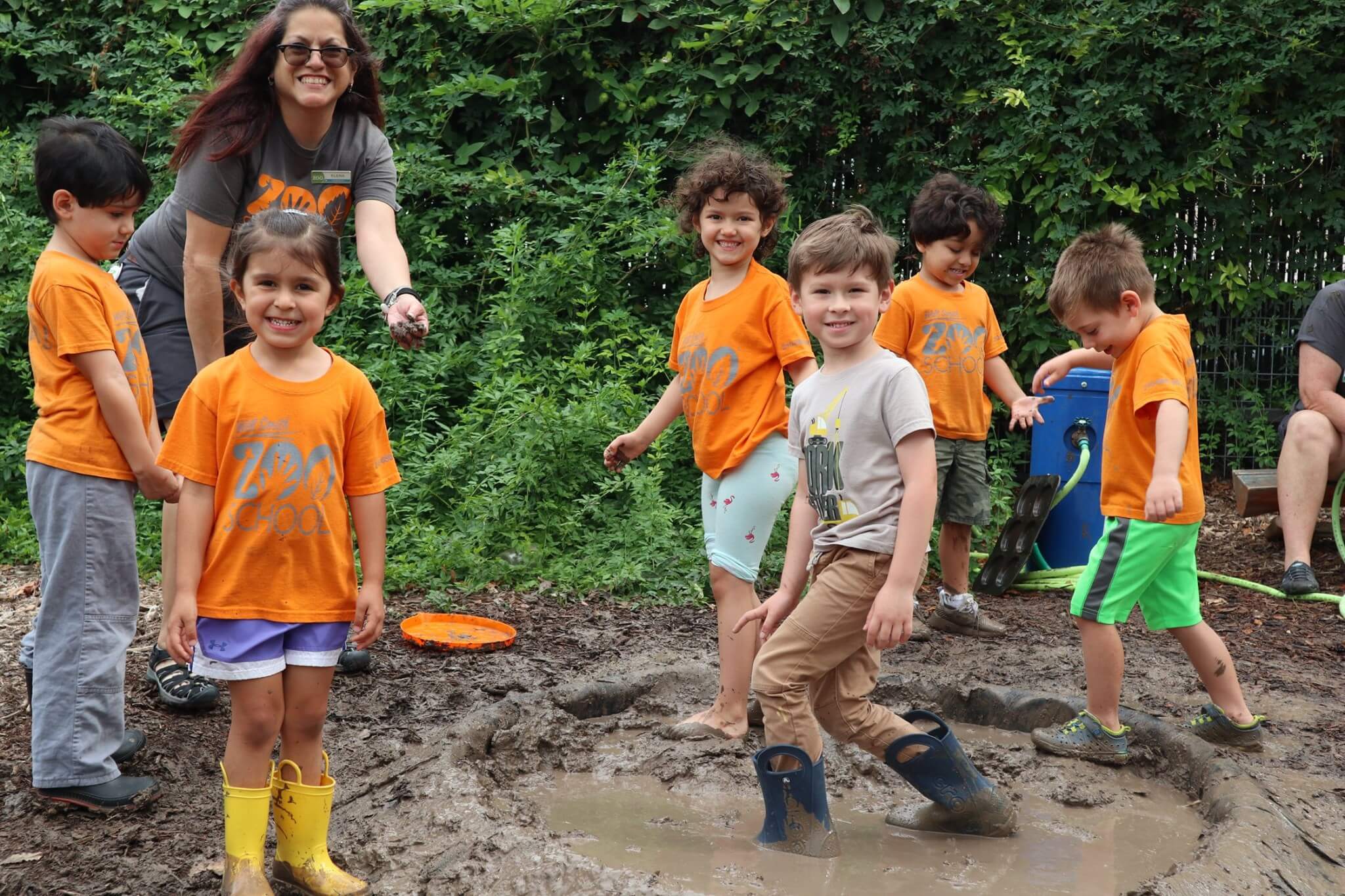
Kids thrive outdoors and learn to care about the environment at the Will Smith Zoo School, a fully licensed nature-based preschool at the San Antonio Zoo, an OLE! site.Photo courtesy of the San Antonio Zoo.
The idea of building big tents for better connecting children to the outdoors—especially children of color and those from low-income households—is gaining momentum across the United States. More health and community-based organizations and leaders in cities big and small are seeing the health and societal value of getting more children into the outdoors. The result is a growing number of coalitions and unique collaborations coalescing around a common cause.
“We are seeing the strength of not going at it alone,” says Monica Lopez Magee, director of cities and community engagement for the Children & Nature Network. “In particular, we are seeing the strength of city partnerships with grassroots organizations that know the landscape and how to get things done. We always want to think big, and we know cities and local and regional stakeholders have unique levers they can pull.”
To that end, Cities Connecting Children to Nature (CCCN), a joint initiative of the Children & Nature Network and the National League of Cities, will be launching a new peer learning and technical assistance program to support city, state and regional groups in their efforts to advance equitable nature connection strategies.
Over the past six years, CCCN has worked with 18 U.S. cities to drive innovative nature connection policies, partnerships and programs, documenting at least 20 cases where a state or regional organization or collaborative has formed to advance children’s access to the outdoors.
Using data from those partnerships, the CCCN State & Regional Cohort will be a 26-month-long engagement where participating organizations will receive technical assistance and support to build capacity and secure resources for launching a regional or state-wide strategy that engages municipal leaders from several cities within the region.
The goal is to improve equitable access to nature for children by embedding children and nature goals across city agencies with support from partnering organizations..
“It’s a unique time for cities as they rebuild from the effects of the pandemic,” Lopez Magee says, pointing to the increased participation in the outdoors during the COVID-19 pandemic.
“We’re starting to see more conversations about nature connection and access to the outdoors at all levels: national, state and local. It’s showing up in policy and in funding and in new places where it didn’t exist before. This shift to a broader, system’s change approach is a good move for helping children be healthier and happier.”
Coles, of the Texas Children in Nature group, points to three Texas cities—Austin, Houston and San Antonio—as examples of city leadership bonding with nature-minded organizations to create new spaces and opportunities for children, and specifically children of color, to gain access to green spaces and outdoor programming and activities.
Texas cities going “green” helps kids
Coles says that Texans are increasing their call for creating green space in their cities, a move that can help to cut soaring summer temperatures that occur in that state.
In Houston, in the wake of Hurricane Harvey, city leaders saw the need for more resiliency measures to protect the city from flooding. City and community leaders recognized the value of replacing non-permeable surfaces, which lead to more flooding, with permeable surfaces and native plantings that absorb rain water and encourage outdoor activities.
Moreover, several task forces in the city are exploring how Houston Public Libraries and Houston Public Schools can become venues for nature connection.
The city of Austin initiated a plan to more equitably connect children and families with nature. The plan involved not just reviewing and revising policies, but also mapping the city to look at the availability of parks and tree canopy coverage and how it corresponded to household income, child population and crime. The outcome identified two school campuses that were “nature deficient,” which led to redesigning them with gardens, trees, cisterns, benches and picnic tables.
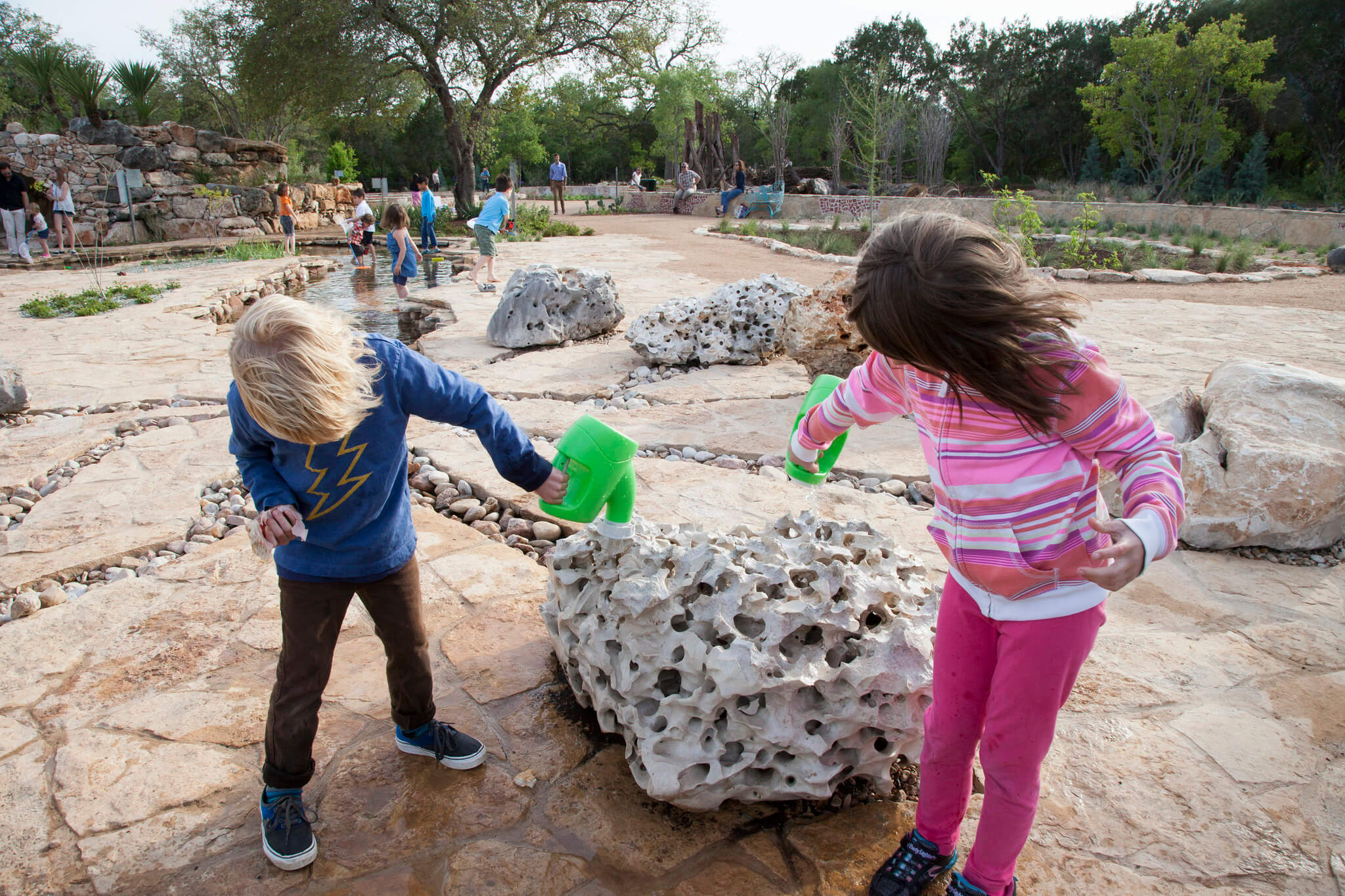
Nature-based activities invite kids to be active outdoors at the Luci & Ian Family Garden, Lady Bird Johnson Wildflower Center in Austin, TX.Photo courtesy of the Wildflower Center.
San Antonio, meanwhile, worked with its Office of Equity, San Antonio Public Libraries, MetroHealth and Texas Children in Nature to create a plan that involved starting “Nature-Smart Libraries” to serve as nature connectors and creating nature enhancements at community centers.
All three Texas cities are members of the national Cities Connecting Children to Nature cohort.
“Cities have a big part to play in creating access to nature,” said Lopez Magee. “City governments touch so much of our daily lives, from maintaining roads and walkways to creating parks to operating our schools.”
OLE! Texas: Bringing nature-smart design to play areas
It turns out state health departments, daycare centers and landscape designers also have a role to play in a unique Texas program called Outdoor Learning Environments, or OLE! Texas.
Six years ago, the Texas Department of State Health Services (Texas DSHS) convened potential collaborators at a Children & Nature Network conference, hosted by the Texas Parks and Wildlife Department. The facts were that U.S. children—and young Texans—between the ages of 2 and 5 were increasingly overweight or obese and lacking in access to healthy and nature-based outdoor play areas. Texas DSHS and The Natural Learning Institute at North Carolina State University began a partnership to change the design and manner in which young Texans get their outdoor exercise.
Using a strategy known as Preventing Obesity by Design, a set of standards, policies and technical assistance was created to help early childcare and education programs (i.e., daycare centers) re-imagine their outdoor play spaces.
Preventing Obesity by Design encourages early childhood educators to move their lessons outside and to create play spaces that incorporate vegetable gardens, fruit trees and curving paths. The state-wide program provides assistance and education about the best practices for designing outdoor learning environments, some of which include creating 10 or more play and learning settings; creating looping walking paths and multi-purpose lawns; and employing shady settings and natural, loose materials in play areas.
Working in the Obesity Prevention Program for Texas DSHS, Cari Browning coordinates OLE! Texas. She says OLE! has local coalition chapters in Austin, Dallas/Fort Worth, Harris County and Lubbock, with demonstration sites in Austin, Harris County, Lubbock and San Antonio.
“As we are working to create resources so that Early Childcare and Education programs can design outdoor spaces according to best practices, we realize there is a significant gap in knowledge and resources to empower ECE professionals to develop, maintain and interact within their naturalized outdoor learning environment,” says Browning.
OLE! Texas now has 17 partner organizations, ranging from the Texas Department of Agriculture to the Texas Nursery and Landscape Association. The University of Texas at Austin Lady Bird Wildflower Center is also a partner.
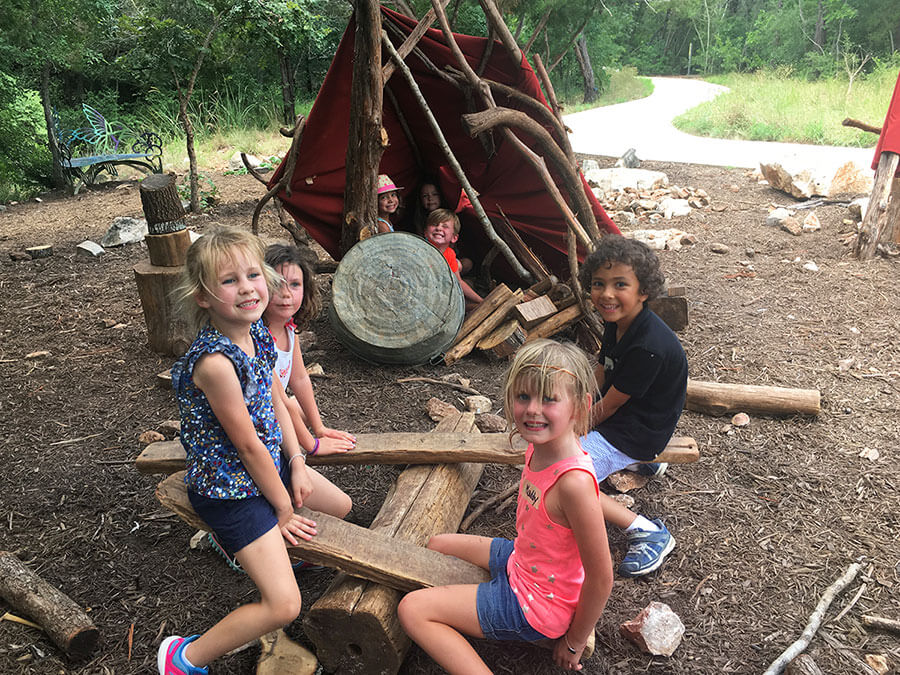
“Camp Fort“ nature-based summer program at the Lady Bird Johnson Wildflower Center.Photo courtesy of the Wildflower Center.
Tanya Zastrow is the director of programs for the Lady Bird Wildflower Center and a leading advocate for OLE! in the Austin region. She says changing the environments where children play can be a difficult task because social norms and economic conditions don’t encourage or allow for children “playing in the dirt, much less getting dirty.”
“There are parents who might be worried about getting food for the day and clean water, and they might not have a clean set of clothes at home,” says Zastrow. “You want kids to go outside and get dirty, but these are real concerns.”
“Yet we have to persevere,” she adds. “We’re bucking a system.”
The New Mexico Outdoor Equity Fund
Nowhere has the power of collaboration for equity in the outdoors been more on display than the creation of the New Mexico Outdoor Equity Fund, signed into law in 2019 by New Mexico Governor Michelle Lujan Grisham and spearheaded by state Representative Angelica Rubio and the Nuestra Tierra Conservation Project.

New Mexico Representative Angelica Rubio talks about equity in the outdoors at the 2019 International Children & Nature Conference.
The fund issues micro-grants to organizations to create opportunities for all youth to have equitable access to the outdoors. Last year, the fund opened for business and received 84 applications, eventually granting $270,000 to 25 applicants across New Mexico. The fund is administered by the New Mexico Outdoor Recreation Division of the state’s Economic Development Department. A new round of funding opened May 3, 2021. Governor Lujan Grisham called the fund “one of the proudest achievements in my administration to date.”
“Everyone deserves a chance to experience (the outdoors), and providing these pathways is a big step toward building the robust outdoor recreation economy we know we can create here,” continues Governor Grisham.
The fund was supported by a coalition of more than 40 state and national organizations, including New Mexico Voices for Children, Conservation Voters New Mexico and Indigenous Women Rising. National organizations that backed the effort included the Outdoor Industry Association, outdoor retailer REI, Latino Outdoors and the Hispanic Access Foundation.
Lopez Magee says the New Mexico Outdoor Equity Fund is an example of a unique collaboration that “came from a policy perspective and had a state representative (Rubio) championing the fact that the outdoors is important and that not every child is experiencing it the same way.”
The big umbrella of creating equitable access to the outdoors for children can have many supporting organizations and, increasingly, it’s not just traditional conservation or outdoors groups. Health care providers, city leaders, state lawmakers, women’s organizations and even agriculture groups are coalescing around a singular idea that getting children into the outdoors is good—for everyone.
“COVID-19 has proven to all of us how critical access to the outdoors is for healing during these times, and also taking care of our most precious and unique spaces,” New Mexico Rep. Rubio said in a recent news release.
“The Outdoor Equity Fund…will do just that—transforming the possibilities and accessibility for countless New Mexican youth—who deserve this access the most right now.”
4 Comments
Submit a Comment
-
Network News
POLICY UPDATE: Policy and advocacy for the children and nature movement
-
Voices
Binoculars, bald eagles and my journey as a Black birder
-
Richard Louv
THE WONDER BOWL: Ten Spring and Summer Nature Activities for Kids and Adults
-
Network News
Minneapolis Spotlight: The promise and possibilities of parks for youth
-
Voices
Why nature is my motherhood ally


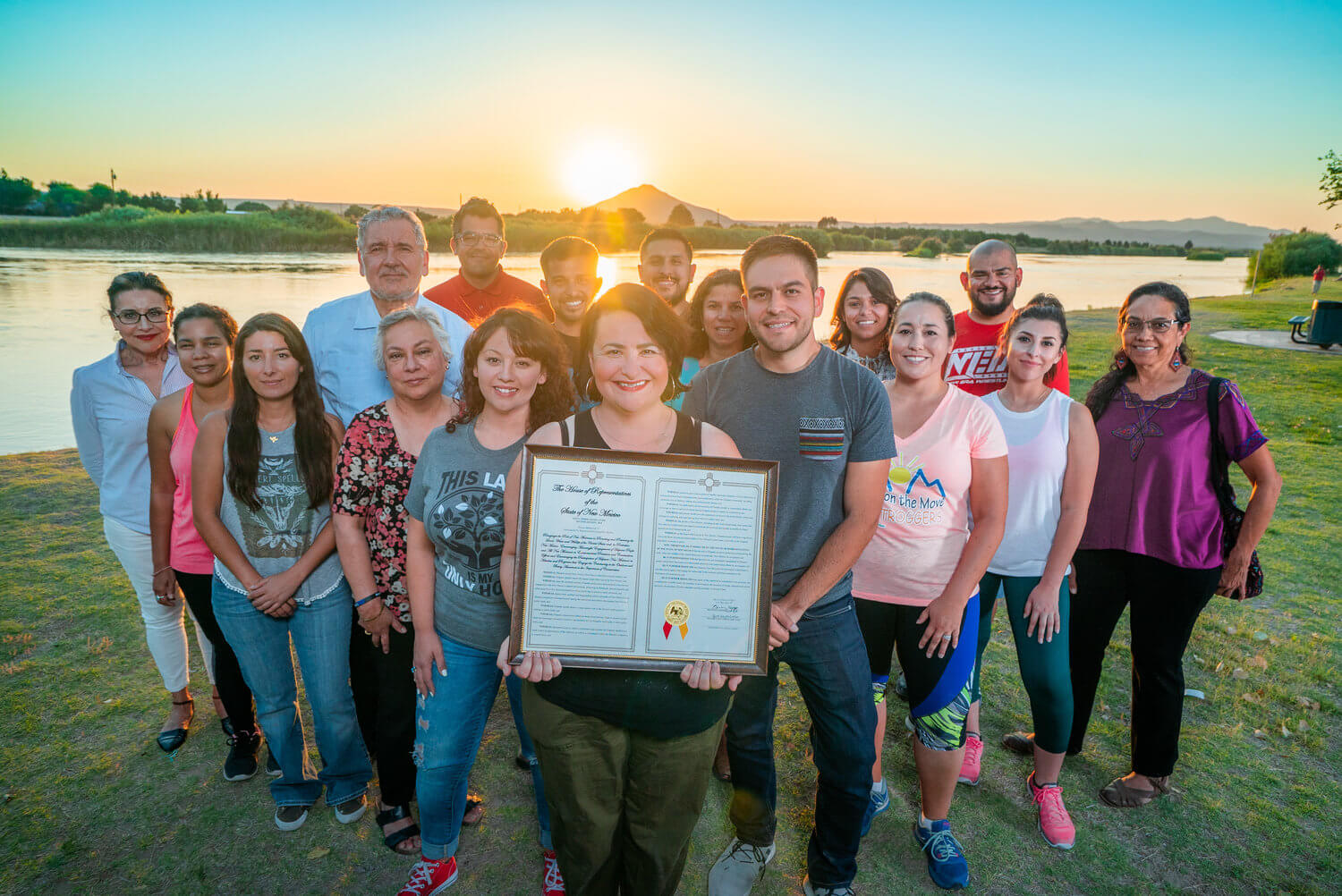
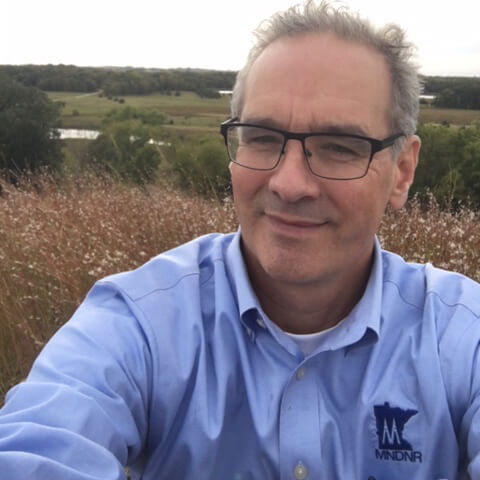

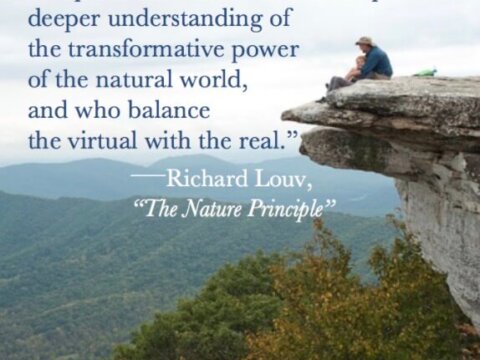
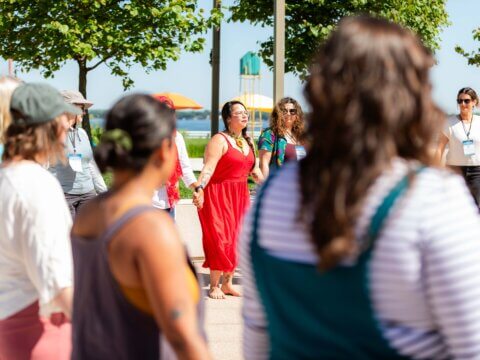
This is great collaborative work. I want to get this work going in a small city(ies) in Southwest MI. St Joseph/Benton Harbor. I will be seeking more information/inspiration from you.
Thanks, Al. We’re glad you liked this article. If you haven’t joined The Trailhead yet, it could be a good way for you to connect and collaborate with others in MI and around the country. You can find a link to sign up for this free online community of children and nature leaders at the top left of our website!
Hi there! I’m currently an elementary educator in California. As a child I was lucky to grow up in an environment where outdoor play was encouraged and expected. I longed for summer days where I could get lost in a riparian jungle on our property with my siblings and neighbors. I have always found a sense of peace And able to find balance in nature. As an adult I decided to go into liberal studies because I love to children and thought that’s what I needed to do. After 18 years of teaching I find myself longing to be involved in A system where nature based play is the norm. I’m feeling frustrated by our current education system and its values and expectations. We are soon relocating to be with family to Texas near the Stephenville and Fort Worth surrounding areas. Are there any organizations I can make a connection with? I would love to use my skills and passion for working with children in an outdoor setting as opposed to getting put back in a system of standardized testing and unrealistic expectations for our young students. Any guidance in the right direction would be much appreciated!
Thank you,
Annie
Hi Annie. Thanks for your comment and best wishes on your move to Texas. Texas Children in Nature will be a great resource. They organize a grassroots network of partner organizations, educators, parents and more, all working to ensure equitable access and connection to nature for children in Texas. OLE! Texas (Outdoor Learning Environnent) is another wonderful resource. We also invite you to join The Trailhead, our free online community for the worldwide children and nature movement. You can learn more here.